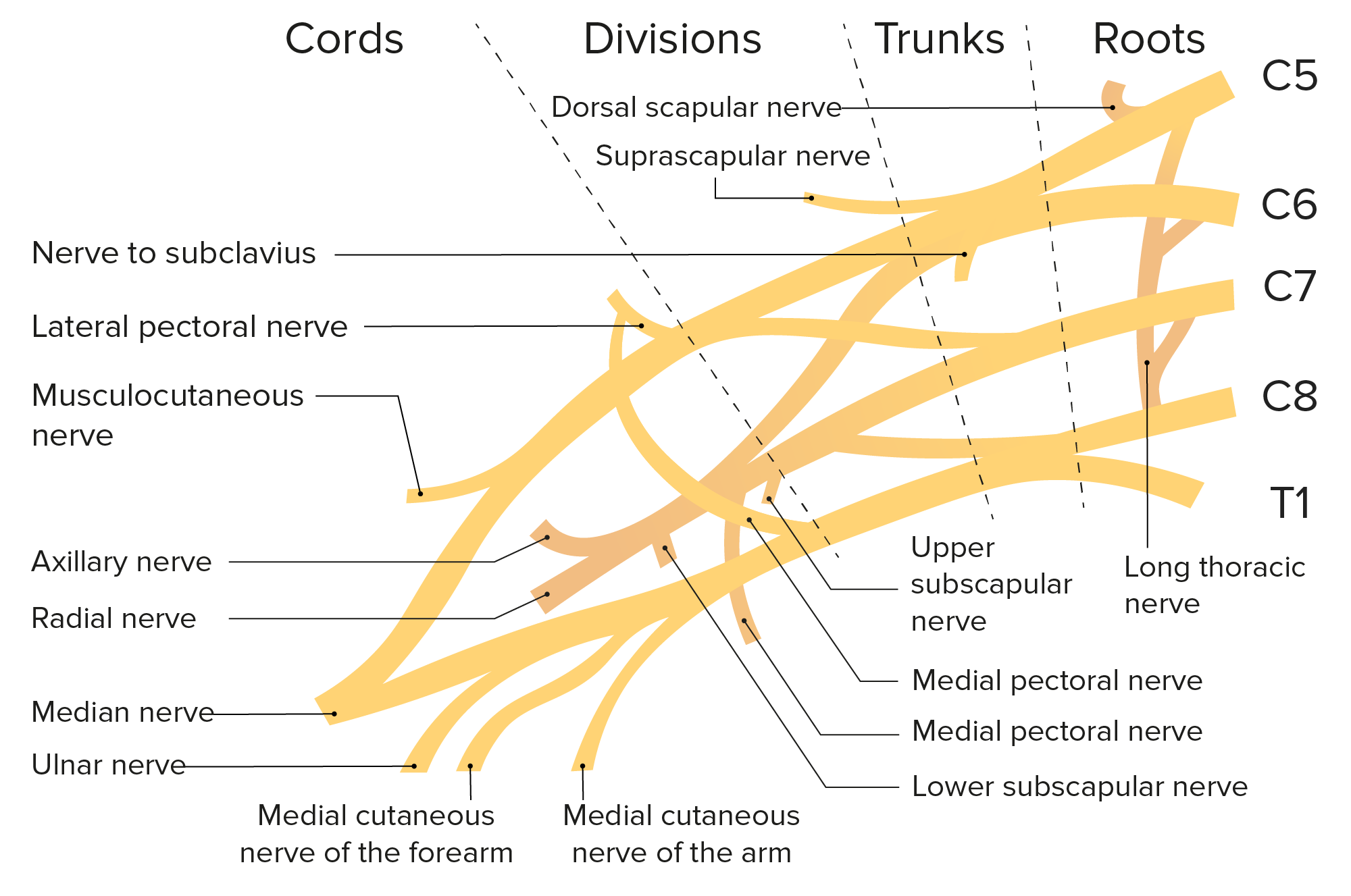Playlist
Show Playlist
Hide Playlist
Neuropathic Pain: Clues to Locate the Lesion (CNS or PNS)
-
Slides Neuropathic Pain Syndromes.pdf
-
Download Lecture Overview
00:01 How do we evaluate patients with neuropathic pain? Well, there's four steps that I want you to remember that we walk through in evaluating the patient with pain. 00:09 First, we're going to ask the question, is this a central nervous system or peripheral nervous system problem? Problems in both area can contribute to neuropathic pain. 00:18 Second, if the problems in the peripheral nervous system, we need to know where it is and localize more specifically to where the problem may be in the peripheral nervous system. 00:27 Third, I want you to think about the medical treatments that exist for treating this type of pain. 00:32 And then, fourth, we're going to walk through some common conditions that you should remember where neuropathic pain is a prominent feature. 00:40 So let's start with step one. Is this pain from the central or peripheral nervous system? When we're evaluating patients both using our history and physical, there's some clues that suggest a central nervous system localization. 00:53 The first would be other central nervous system signs, cerebellar dysfunction, cognitive dysfunction, altered mental status. 00:59 Those sorts of things tell us the brain is where the problem lies. 01:03 Hemibody symptoms or hemibody findings commonly arise from the central nervous system and localized to the brain subcortex or brain stem, and that would point us to a CNS cause of pain. 01:15 A sensory level tells us something's in the spinal cord and may suggest that the neuropathic pain description's coming from spinal cord pathology and myelopathy. 01:23 Bowel/bladder involvement could be from central or peripheral nervous system. 01:26 A spastic bladder is suggestive of a central nervous system process. 01:31 Cranial nerve involvement suggests brainstem dysfunction. 01:34 And a good example of that would be trigeminal neuralgia where that pain is coming from a problem in the central nervous system. 01:40 Some of the common conditions we think about where there's a central nervous system contribution to pain or thalamic pain syndrome and cord compression. 01:49 What are the clues to a peripheral nervous system localization to pain? Well, myotomal or dermatomal distribution, so weakness that's associated with pain in a specific myotome or sensory changes that are localized to a specific dermatome point to a peripheral nervous system localization. 02:09 Reduced or absent deep tendon reflexes, urinary retention with overflow incontinence, length-dependent motor, sensory reflex changes or length-dependent motor and sensory changes on examination. 02:23 Lack of cranial nerve involvement or normal mental status function. 02:27 A rash or other cutaneous symptoms, all those point to neuropathic pain originating from the peripheral nervous system. 02:33 We want to figure out what that problem is and uncover the etiology of the pain. 02:39 And we can think about some common conditions like radiculopathy, diabetic polyneuropathy and post-herpetic neuralgia that may present in this way.
About the Lecture
The lecture Neuropathic Pain: Clues to Locate the Lesion (CNS or PNS) by Roy Strowd, MD is from the course Neuropathic Pain Syndromes.
Included Quiz Questions
Which of the following is not a symptom of CNS dysfunction?
- Dermatomal distribution
- Cerebellar dysfunction
- Cognitive dysfunction
- Presence of a sensory level
- Hemibody symptoms
Which of the following is a sign of a peripheral nervous system lesion?
- Reduced or absent deep tendon reflexes
- Cranial nerve involvement
- Sensory level
- Hyperactive reflexes
- Hemibody symptoms
Customer reviews
5,0 of 5 stars
| 5 Stars |
|
5 |
| 4 Stars |
|
0 |
| 3 Stars |
|
0 |
| 2 Stars |
|
0 |
| 1 Star |
|
0 |




